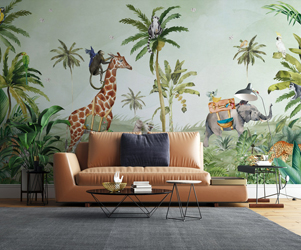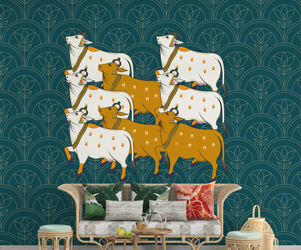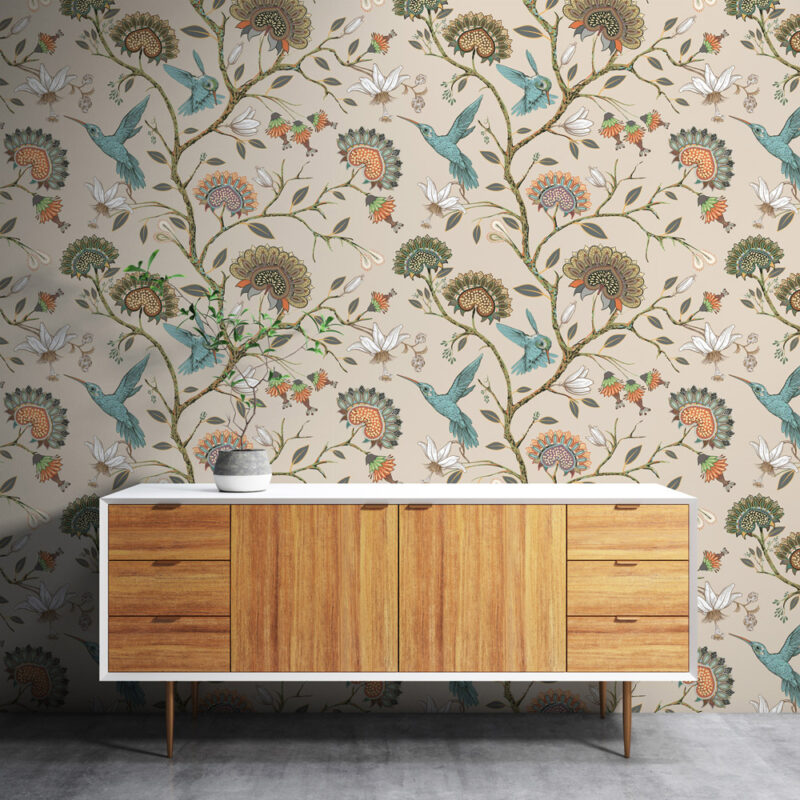When installing fresh wallpaper, unsightly creases are akin to blisters, with the crucial distinction that once the wallpaper dries, creases become irremovable. Consequently, swift action is imperative.
The occurrence of wrinkles in wallpaper can be attributed to two primary factors. Firstly, errors made during the process of smoothing out the wallpaper can lead to creases. Additionally, in the case of paper-based wallpapers, creases may form during drying if the requisite soaking duration is not observed. Unsightly creases can also manifest when previous wallpapers are not properly removed, or if the surface is uneven. Proficient DIY enthusiasts understand the vital significance of adequately preparing the surface prior to hanging wallpaper.
Addressing creases during the wallpapering process is essential, as they become permanent once the wallpaper dries. This guide elucidates the causes of creases, outlines corrective measures when they arise, and underscores the wisdom of "prevention being superior to cure."
Origins of Creases in Wallpaper
Let's delve deeper into the sources of creases:
A. Incorrect Technique during Wallpaper Application and Smoothing
Applying wallpaper demands a measured approach and should never be rushed. Hurried efforts often result in subsequent complications. Creases are frequently induced through excessive rubbing when substantial stretches of wallpaper are affixed to the wall, and the adhesive paste dries too rapidly. The rule of thumb here is: Apply and smooth individual wallpaper lengths section by section, immediately after affixing. The direction of smoothing is also crucial. Always work from top to bottom and right to left. Hasty actions should be avoided!
Employ a gradual pace and suitable tools for the smoothing process. For delicate or thin surfaces, opt for a rubber roller, whereas a sturdy wallpaper spatula is ideal for robust wallpapers. Addressing small creases may involve employing a wallpapering brush or rubber roller once more. For larger folds, the best recourse is to meticulously remove the affected strip of wallpaper, then reapply and smooth it out anew.
B. Inadequate Soaking Period for Paper-Based Wallpapers
When dealing with wallpaper having a paper backing, each length necessitates a specific soaking duration before being affixed to the wall. During this interval, the wallpaper expands, a natural occurrence. The recommended soaking duration for each wallpaper length is outlined on the accompanying label. Strict adherence to these soaking times is imperative to ensure uniform expansion. Neglecting this aspect, or failing to follow the soaking guidelines, can result in continued expansion of the wallpaper post-application. Though not initially apparent, this can lead to undesirable creases upon drying. As the wallpaper contracts during drying, these creases become permanent. The only solution is to replace the entire length or devise creative concealment strategies, such as placing a picture over the affected area. To avert creases, consistently adhere to the specified soaking times.
C. Overlaying Old Wallpaper or an Uneven Surface
Occasionally, new wallpaper is affixed over existing wallpaper to save time and effort. This approach can be problematic, particularly when layering paper-based wallpapers. The moisture from the new wallpaper causes the old layer to expand, resulting in uneven drying and the formation of creases. Uneven surfaces do not provide a conducive foundation for crease-free wallpaper installation. Smoothing the wallpaper becomes challenging due to the irregularities, like elevations or depressions, inevitably present.
Preventing Creases in New Wallpaper
To ensure a crease-free wallpaper installation, consider these essential factors:
Ensure the surface is dry, clean, even, stable, and absorbent.
Whenever feasible, remove old wallpaper prior to application.
Observe the specified soaking time for each individual wallpaper length, as indicated on the label.
Thoroughly and gradually apply and smooth each length, working from top to bottom and right to left.







